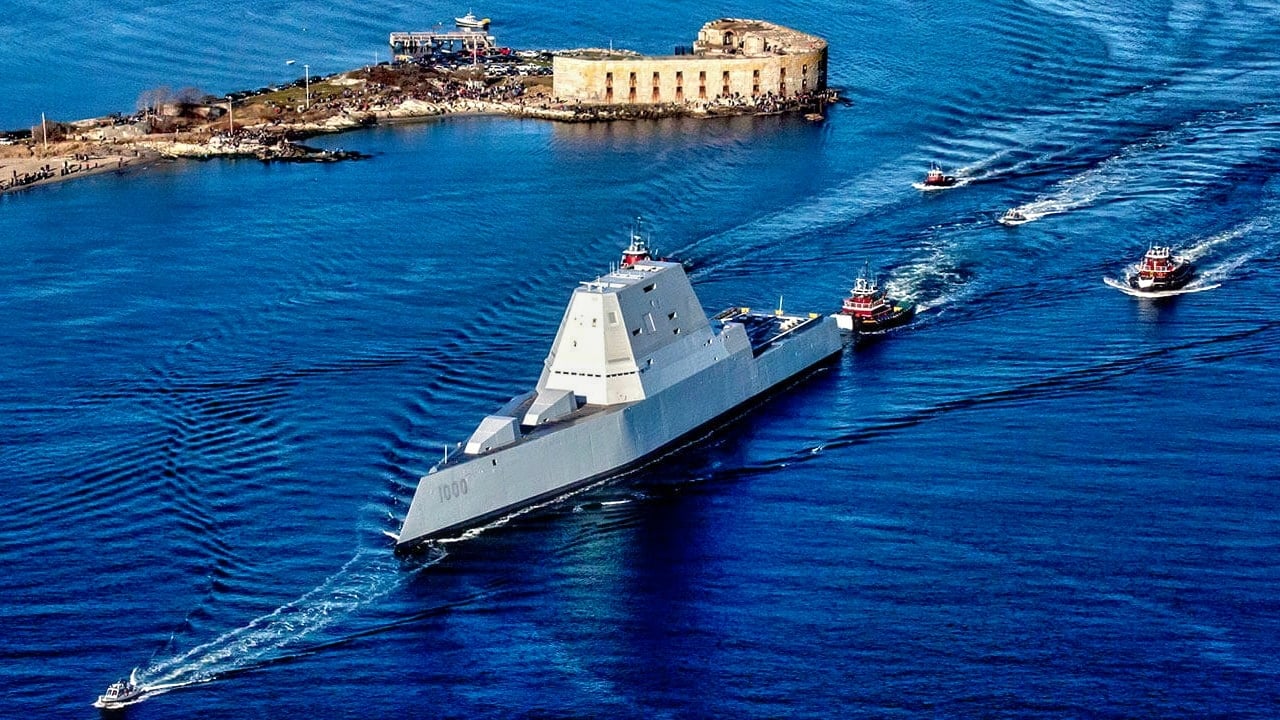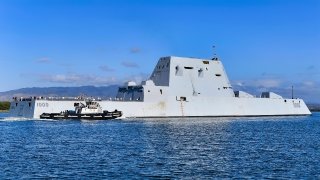Ranked: The Top 10 Warships of All Time
Throughout history, warships have played pivotal roles in shaping world events and asserting naval dominance. This top 10 list highlights the greatest warships ever built, from the Carthaginian Quadrireme, which showcased advanced naval engineering, to the USS Johnston, known for its heroic stand at the Battle of Leyte Gulf.
Summary and Key Points: Throughout history, warships have played pivotal roles in shaping world events and asserting naval dominance. This top 10 list highlights the greatest warships ever built, from the Carthaginian Quadrireme, which showcased advanced naval engineering, to the USS Johnston, known for its heroic stand at the Battle of Leyte Gulf.

-Each warship, including Zheng He’s Treasure Ships and HMS Victory, reflects a unique blend of technological innovation and strategic importance.
-These vessels not only changed the course of battles but also left lasting legacies in naval history, demonstrating the evolution of maritime warfare from ancient times to modern conflicts.
Presenting the Top 10 Warships of All Time
World history has been defined by the ability of man to travel across vast distances.
Until the dawn of airpower, the mighty warship allowed for these great expeditions. History is replete with famous—or, in some cases, infamous—warships.
While certainly not exhaustive, this top ten list will take you through what this author believes are the greatest warships that ever sailed.
10. Carthaginian Quadrireme
The Carthaginians were likely the greatest naval power of the Mediterranean Sea in the ancient world. Their navy was more advanced than even the larger Roman Empire to their north. In fact, the Roman Empire, a mostly land-based power, recognized the sophistication of the Carthaginian navy and strove to crush it, realizing that Carthage was the only group standing between Rome and total dominion over the Mediterranean.
Many have read about the ancient Greek triremes, but few may be aware that the Carthaginians perfected this design with the quadrireme.
These boats had four rows of oars on each side, allowing for greater speed and power compared to triremes. These boats could also carry more marines and equipment for naval combat. When Rome captured some of the Carthaginian quadriremes during the First Punic War between the two powers, they reverse-engineered the boat, which in turn allowed for the larger Rome to clone Carthaginian capabilities and ultimately defeat the Carthaginians.
9. Zheng He’s Treasure Ships
Chinese Admiral Zheng He, operating under orders from the Ming emperor, led a series of missions consisting of 300 gigantic wooden warships. These great ships went from China down to India, over to the Persian Gulf, and even making it as far south as East Africa, long before Europeans ventured there. The fleet achieved its goal of “increasing the prestige of China and its emperor overseas.”
This fleet consisted of warships that were five-masted and six-masted troop transports, as well as six-to-seven masted transports carrying grain, horses, and water. They featured divided hulls with several watertight compartments, too.
Sadly for Zheng He, despite the magnificent success of his voyages, his chief benefactor, the Ming emperor, died and was succeeded by court Mandarins—bureaucrats—who resented Zheng He. Their goal was to turn China inward, away from the world. All that hard work that Zheng had put into his voyages, all the resources spent on building the greatest fleet that the world had ever seen—and it was at the time of its creation—was for naught.
The ships were mothballed, their mission ended, and Zheng He fell out of favor with the court. But he showed the world just what great ships could do.
8. Koxinga’s Junk
In 1662, the Japanese pirate known as Koxinga (or Cheng Cheng-kung) led a resistance against the ruling Chinese dynasty at the time, as well as against the Dutch East India Trading Company’s presence on Formosa (modern Taiwan). In need of a new base, Koxinga strove to dislodge the Dutch presence on Formosa. No one had dared take on the technologically superior Dutch. But Koxinga had a plan. Part of his plan involved the use of Chinese sailing ships known as “Junks.”
Koxinga was brutal, and he especially loathed the superior and haughty Dutch who had encamped on the island redoubt he dreamed of using for his own purposes. No one believed Koxinga, with his rag-tag force, could dare to take on the might of the Dutch East India Company’s military power. But he did, and his fleet of Junks, though smaller than the warships that the Dutch deployed, were greater in number and used their maneuverability and smaller size to get in close to the Dutch warships and engage in swarming tactics.
In a stunning turnaround, Koxinga evicted the Dutch and humiliated the powerful Europeans. The 1662 Sino-Dutch War for control over Taiwan should be required learning for American strategists today, who believe that China yearns to control Taiwan (they do) but cannot take it because of a lack of proper seapower. The Dutch said the same thing about Koxinga. His rag-tag fleet proved them all wrong.
7. SMS Emden
When one thinks of the First World War, they think of the brutal trench warfare that defined the Western Front. But an interesting fight erupted along the periphery of the war, in the Asia-Pacific.
Germany held a port in China as a concession. From that port operated Admiral Maximilian von Spee’s East Asia Squadron, consisting of heavily armored and armed cruisers that the British had taken to calling “pocket battleships.” While the entire squadron was legendary in its own right, one warship in the group stands out. That is SMS Emden.
Led into combat by the elegant and dashing Commander Karl von Muller, this small German cruiser of 3,600 tons displacement, with two masts and three funnels, armed with ten 4.1-inch and eight 5-pounder guns, as well as two submerged torpedo tubes, turned out to be a decisive actor against Allied forces and shipping throughout the Indian and Pacific Oceans. Separating herself from the East Asian Squadron and taking on the Allies at sea on her own, this warship became the stuff of legends in the press both in Germany and throughout the Allied nations.
Writing in 1915 of her exploits, U.S. Navy Lieutenant Commander Lyman A. Cotton explained that, “German ports of any character were few and far between, being located at widely divergent points in the South Sea Islands. Thus the prospect for a small German cruiser at sea in the Pacific did not seem very favorable for accomplishing anything to injure or embarrass her enemies, which by this time included four nations possessing powerful navies—England, Russia, Japan, and France. On all sides her enemies had ships, naval p-orts and commercial ports ready and capable of naval use, while the little Emden had only her bunkers full of coal, her speed of 25 knots, her determination to accomplish something, and such facilities as the high seas afforded.”
Nevertheless, Emden captured multiple ships belonging to enemy fleets and garnered a fearsome reputation as a true raider. Ultimately, she was cornered on a small island in the South Pacific by the Royal Australian Navy warship, HMAS Sydney. Most of her crew was captured on North Keeling Island after the crippled warship was beached by her skipper, Herr Muller. Although they ended in debacle, Emden’s exploits are worth remembering. Because both she and the rest of her East Asia Squadron did more to complicate the efforts of the Allies than most other German feints had. If Japan had not entered the war against Germany, it is likely that the East Asian Squadron would have been even deadlier than it was.
6. HMS Victory
This beast was Admiral Horatio Nelson’s flagship at the decisive Battle of Trafalgar, in which Britain’s Royal Navy knocked Napoleon’s navy out of the Napoleonic Wars for good. Built and completed in 1765 (and still in commission today, more than 259 years later), Victory is docked at Portsmouth Historic Dockyard. This ship was clearly built to last. It was one of the larger warships of its era, coming in at 227 feet and carrying a whopping 104 guns among her three decks.
Victory is the embodiment of both her era and the man who ultimately commanded her during her greatest victory over Britain’s most significant enemy to that time. The warship is entwined with Nelson’s heroism and swashbuckling attitude. It was on HMS Victory that Nelson hoisted his famous flag signal that read, “England expects that every man will do his duty.” This became a rallying call for the British. Oddly enough, Napoleon, when he had learned of the flag signal, ordered that every French warship be festooned with a variation which read, “La France compte que chacun fera son devoir” (or, “France expects that everyone will do his duty.”)
Admittedly, like much of the French naval effort during the Napoleonic Wars, this slogan comes across as a cheap knockoff of the proper English version.
Ultimately, Victory outlasted her famous commanding officer. Nelson was fatally shot aboard the warship during its penultimate stand at Trafalgar. To this day, no one is certain which French sailor got the kill-shot on Nelson, although several British veterans claimed to have shot Nelson’s killer afterward. Regardless, Nelson’s leadership ended Napoleon’s quest to become what Nelson described as the “George Washington of France.”
5. Ville de Paris
Ville de Paris was considered a first-rate ship-of-the-line for the French Navy. She was the flagship of the French naval forces assigned to assist American revolutionaries during the Revolutionary War against the British Empire. This warship presided over bruising defeats of the otherwise dominant British fleet. In fact, for many of the French sailors, their campaign to aid the American revolutionaries was a bit of payback for having lost their North American empire to the British a decade before, in the French and Indian War (known in Europe as the Seven Years’ War).


